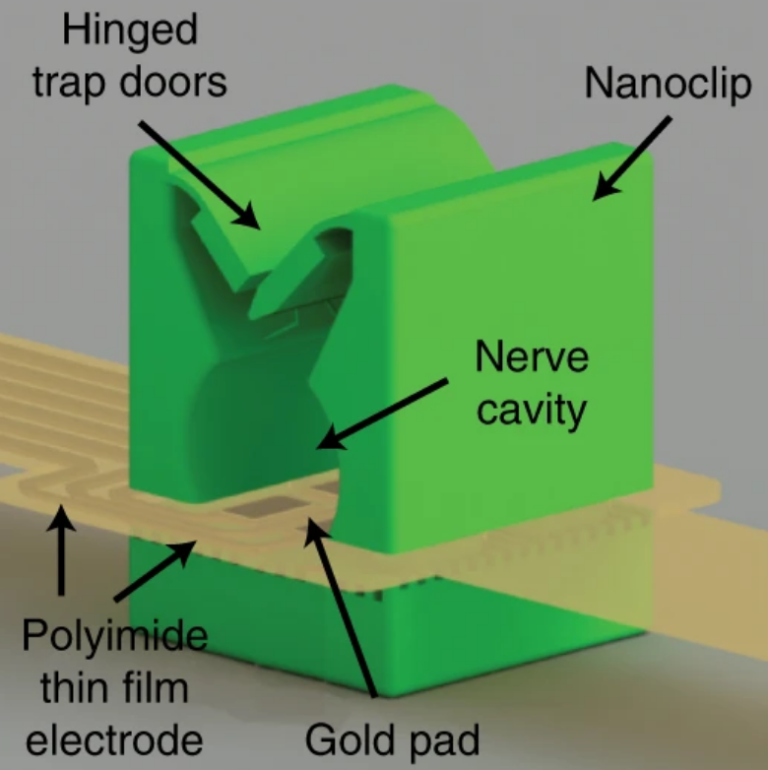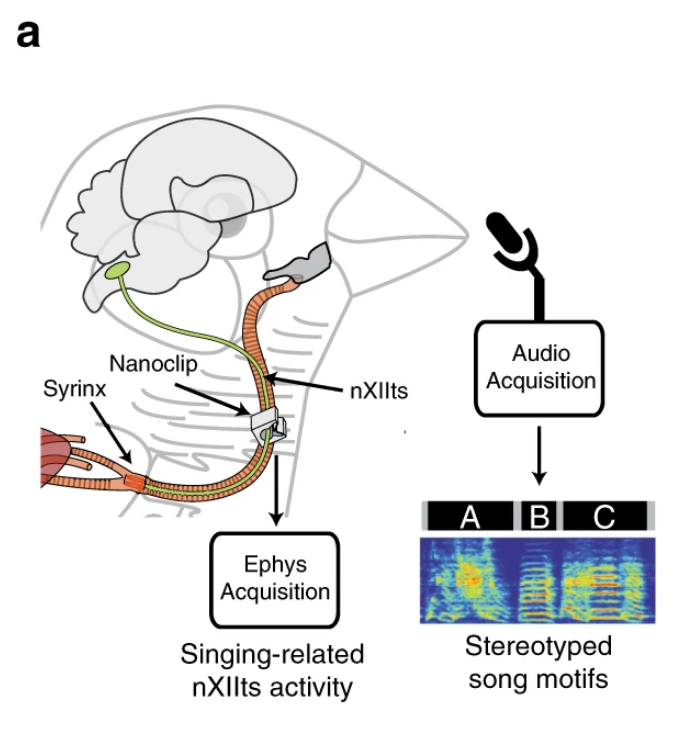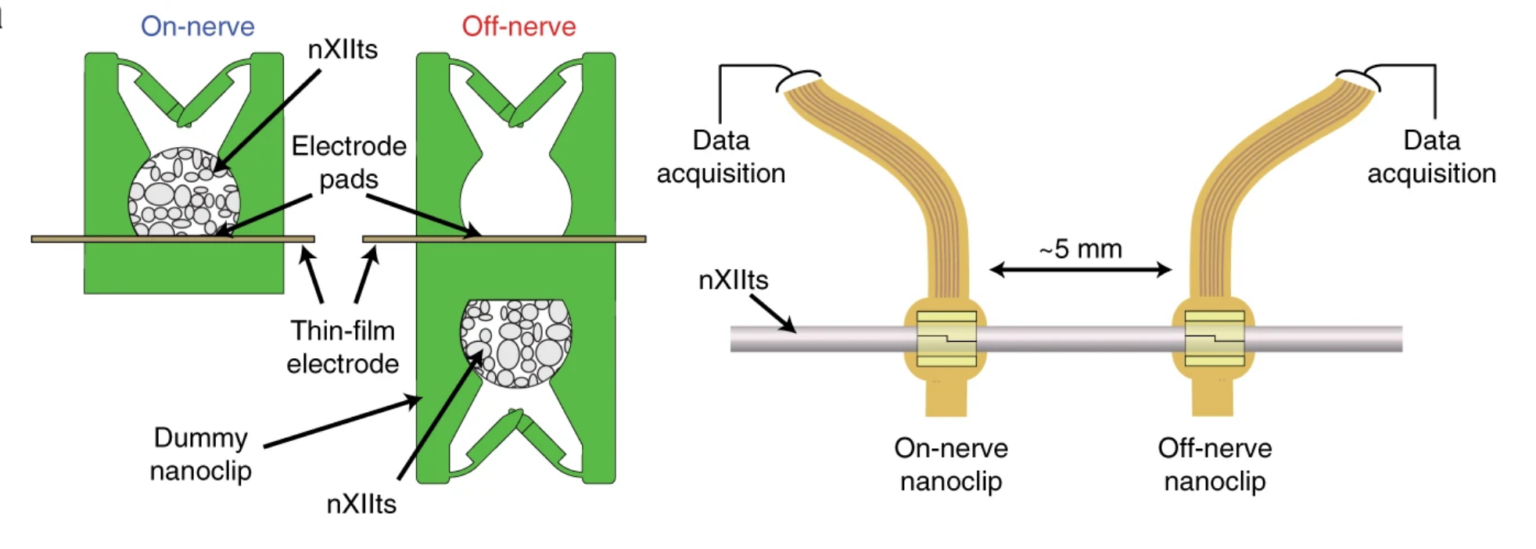China3D printingNet September 2nd, using the new3D printingA team of researchers successfully recorded electrical impulses that drive the birds’ peripheral nervous system to make sounds.Due to the reliance on thin film microfabrication and nanoscale3D printingWith their customized technology, they were able to create nano clips about the diameter of a human hair. It is the first cuff electrode used to record and stimulate peripheral nerves. Its production scale is compatible with the smallest nerves of the human body, and can be used for new treatments for many diseases.
This technology was published in the journal Nature Communications on August 21, 2020, and the article described the technology showing Tim Gardner, principal investigator of the University of Oregon Phil and Penny Knight campus neuroscience acceleration research, as well as Boston University and The bioelectronics department of GlaxoSmithKline’s researchers is able to manufacture nanoclip on such a small scale. In addition, Gardner’s research team described the successful recording of electrical pulses that drive sound after the device was implanted in several adult male zebra finches.

Zebra finch songbird. (Photo courtesy of Mehran B/Pexels)
According to Gardner, this research is seen as an advancement in the emerging field of bioelectronic medicine, which may eventually lead to new treatments for diseases such as inflammatory bowel syndrome, rheumatoid arthritis and diabetes. The goal of bioelectronic medicine is to decode and adjust peripheral nervous system signals to obtain therapeutic control of target organs and effectors. Experts believe that this field can replace or supplement drug-based interventions by affecting body function, thereby revolutionizing medicine and significantly improving treatment effects and reducing health care costs. Nevertheless, device miniaturization is still one of the key factors for the success of bioelectronic medicine in the future, and according to the research of researchers, the field still relies on some electrode-based devices, which prove to be difficult to use.
Gardner and his colleagues suggested that the nanoclip can decode and modulate electrical signals propagating in the peripheral nervous system, which contains nerves and neuronal cells outside the brain and spinal cord that control the peripheral organs of the brain. In addition, bioelectronic medicine attempts to modulate these signals to treat some chronic diseases, such as asthma, bladder control, hypertension, polycystic ovary syndrome, and even inflammation in some COVID-19 cases.
GardneSaid: “I think many future equipment will involve thin film microfabrication and micron-level processing using standard clean room technology.3D printingThe combination. This applies to biomedical implants and equipment used in experimental physics and other fields. “
Designed by the research team3D printingMachine made nano clamps for research.According to China3D printingThe network understands that the equipment manufacturing speed of this printer is 20 times faster than existing commercial printers running at similar resolutions. The micro-neural interface is made using a custom direct laser writing system that can print anchors from a standard CAD file design. In this case, Dassault Systèmes 3D design software Solidworks is used. Thanks to the printing speed and digital design, researchers can manufacture nano clips with various sizes and shapes to achieve the best fit.

Rendering of the membrane-integrated nanoclip neural interface, showing the key components. (Photo courtesy of Timothy Gardner/Nature Communications)
In order to achieve an implantable device that matches the size of the small nerve, the thin-film electrode array consists of a 50-nanometer gold layer encapsulated between insulating and biocompatible polyimide layers. The thickness and narrow width of the device produces a low bending stiffness comparable to that of the surrounding tissue. Use the polyimide film microfabrication technology to customize the multi-part electrode of the film, and then wire-bond it to the printed circuit board to connect to the test equipment.
In the vocalization process of 37 adult male zebra finch birds used in the entire study, in addition to obtaining stable, high-signal-to-noise ratio neural signal recording, the device also enables researchers to precisely control the output of the nerve. They were able to excite the unique vocalizations of different activation spatial patterns on the six electrical contacts in the nanoclip. According to the authors of the study, this spatiotemporal control may be useful for future biomedical implants that not only try to activate nerves, but also have space for specific structures within nerves that have different functions in the end organs. Selective.
After the nanoclip was implanted into the right side of the nerve of the tracheal syringe of the songbird, the plan of the bird’s activity was recorded. The acquisition software that triggered the song captured the vocalization and neural activity. (Photo courtesy of Timothy Gardner/Nature Communications)
China3D printingNet Comments: One of the key features of this device is its ease of surgical implantation, which is an important method in the future of bioelectronic medicine.“Imagine that you have to manipulate a small nerve and then use tweezers to wrap a device around it to open the cuff electrode and position it on the nerve. The current micromanipulation required for the cuff electrode may damage the least Nerves. Instead, just push the 3D nanoclip into the nerve to implant it. This easy-to-implant method can be used for other minimally invasive surgery. This research is indeed a new manufacturing method for sub-millimeter structures. Early testing.
The co-authors of this study believe that their nanodevice can provide a new reference for safe implantation, stable recording of high signal-to-noise ratios within a few weeks, and precise adjustment of small peripheral nerves. Although the development of nanoclamps has taken advantage of other devices that have been used for decades, here, researchers are able to combine a variety of factors to make the device and nerves work closely together. Although this study is successful, the researchers expect that in the future it will be necessary to further study other species and nerves to further verify the potential of nanoclip.
Simultaneously conduct two nanopen chronic recording programs. (Photo courtesy of Timothy Gardner/Nature Communications)
With the support of the National Institutes of Health (NIH) and signed a sponsored research agreement with GlaxoSmithKline, the research shows that nano-clamps with precise dimensions can achieve precise functional adjustments to the songbird system. The lead author of the study, Boston University Research Assistant Professor Timothy Otchy (Timothy Otchy) and colleagues demonstrated flexible and precise control of the terminal organs. A new generation of bioelectronic therapy centered on the closed-loop control of peripheral circuit functions is within reach, and may become the key to the advancement of medical care in the next few decades.
China3D printingNet compile article!
(Editor in charge: admin)


0 Comments for “3D printed implants can stimulate nerves in bird brains, promising to treat human-related diseases”